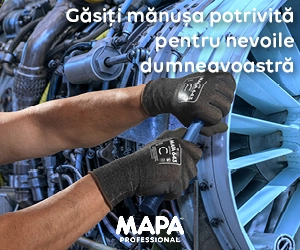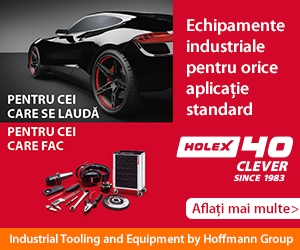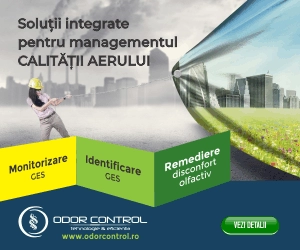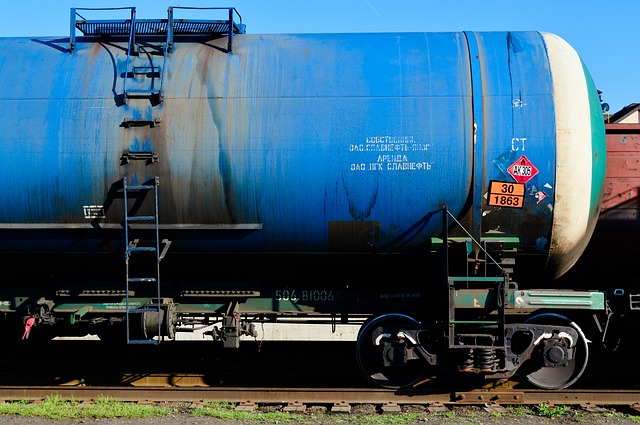Which are the main challenges of implementing health and safety programs and strategies in Romania?
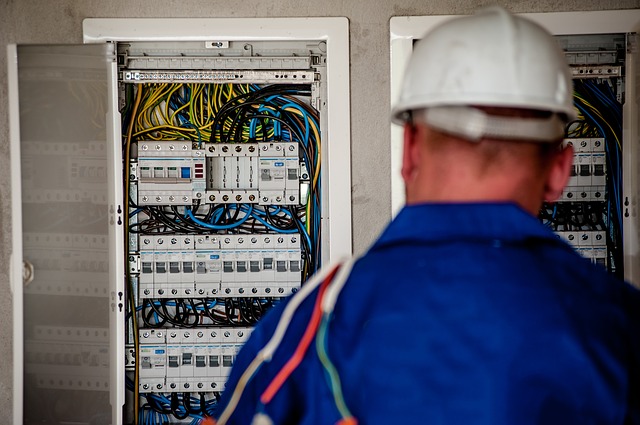
I would say that we are still struggling with the transition from the old-fashioned “labor protection” to the modern concept of “health and safety culture”. The challenges are a conjunction of contributing factors which involves most of the stakeholders: employees, employers and authorities. The employees are used to do what they are told, without really acknowledging the implications their action have on their own and other’s safety. Of course, this is mainly related to the level of H&S education, experience and, most of all, to the routine associated to each activity. On top of it, the history of reactive safety left only coercive marks in the collective memory of the work force, thus leading to a generalized attitude of rejecting the concepts of H&S. In addition, the tremendous paperwork is always a burden on the activity. This leads us to the next stakeholder: the employer. Throughout my carrier I’ve discussed with numerous managers (from large to small companies) which were overwhelmed by the incredible amount of documents which had to be “produced” in order to comply with the legal requirements. As a sad joke, we cannot omit the famous “stamp and signature” which is required on most of the documents. An employer always has a fear of “missing, just because there are so many. The authorities should be an active part in setting success goals for the development of H&S programs and strategies. The legal frame is here, aligned with the European one, but the implementation approach has still a lot of room for improvement. I’m referring again to unnecessary bureaucracy, lack of flexibility towards innovation, and reactive culture. My strong belief is that the way to improve Romanian’s approach regarding H&S is by creating authentic partnerships between industry and authorities. Both parts have lessons to learn from each other’s experience and we can progress towards a positive national H&S culture only by sharing in a constructive way.
Madalina Gogorici – Safety Expert
Lack of participation from all stakeholders, from top management, to employees and to state (authority) representatives. Partly because of complacency, partly because incompetence and list can continue. Bad written, understood and applied legislation in HSE (SSM) and fire emergency (SU)
Constantin Popa - HSE Expert
In a global, complex and dynamic organization, the implementation of health and security programmes and strategies is a fundamental goal in order to create a safe environment for carrying out activities. Cargill has committed to provide a safe work place for its employees and contractors, and the main challenge in achieving this goal is to develop a sustainable EHS culture. This is possible by transitioning from a mindset that the company requires safety at work to a mindset where team members have a conscious need to work safely, to avoid work accidents, where we have the faith and joy to come back healthy to our loved ones, from a mindset that says “it’s good it didn’t happen” to the joy of identifying unsafe actions/conditions, which translates into improved working ways and increased safety. In simple words, the transition from a procedure/obligation/rule to organizational culture.
Mihaela Tampu - Cargill Romania
Main challenges are around having a culture of health and safety. It is fair to say that building a safety culture in Romania is a major task of itself and is much about understanding two things: you can’t buy health and there is no such thing as 100% safe. But with the right tools, a state of care towards people, meaningful programs and focusing on education and awareness in terms of safety, a safe and sound environment can be achieved. Then if we talk about strategies and programs those are to be built on what it works not only culturally but mainly on specific industries. Cause each industry has its own specific safety aspects that need to be undertaken and solved. Nevertheless, basic safety is something that needs to be present irrespective of industry.
Gino Laios - Philip Morris Romania
Main challenges are coming from poor risk awareness of employers (usually, small employers are considering that HSE tasks are completed when HSE booklets are signed by employees) and poor safety behavior from employees (principle “may work like this”)
Cristian Olteanu - Black Sea Oil and Gas
The main challenge of implementing of HSE Programs and Strategies in Romania is a low culture of HSE inherited from the communist period and perpetuated to the next generations.
Dan Bajaliu - Linde Gaz Romania
It is challenging that the mindset on which people, in general, are mainly relying on is based on luck. We are tempted to let ourselves guided by the “it will never happen to me” principle. This mindset is based on the “I have did it in this way since a long time and I am still alive” belief. Another challenge is represented by the costs. Many companies in Romania put too much effort into analyzing the costs of managing occupational health and safety. Unfortunately, concentrating on these thoughts, they do not think of the material and emotional cost in case a fatal accident occurs. What Skanska does is to change this mindset through its powerful health and safety policy which is implemented in every project developed and with every stakeholder.
MIRCEA BOSIE - SKANSKA PROPERTY ROMANIA
Prevention of the risks and promotion of safer and healthier conditions at the workplace. Prevention of work accidents or serious occupational diseases. Maintenance of a good health condition of the workers. These together lead to the qualitative improvement of the workplaces and of the working conditions and to the promotion of competitiveness. Maintaining a good health condition of the workers has a direct and measurable positive impact on productivity and contributes to the improvement of sustainability of the social safety systems.
RODICA STEGERAN - ROFA TEXTIL PRODUCT
People are always the greatest challenge: how can we motivate them, how can we change their mindset and behavior. First of all people need to feel that they are part of the changes and not only that bear the consequences, therefore communication is very important.
We can change our employees mindset and behavior only if we acknowledge that we need to change ours first and start acting differently.
RADU ALEXANDRU - DS SMITH
I think the most important challenge is dealing with people’s culture in terms of safety. Someone once told me: “Culture is what we do when there is nobody watching us”. Unfortunately, safety culture and awareness are not one of the strongest points of Romanians and the best picture of this one you can get by looking at a normal day’s traffic in a busy city: drivers using mobile phone while driving, not using seat belts (you can even buy fake seat belt buckles at traffic lights), pedestrians not using crossings on highly circulated streets or vans parked in such a way that they obstruct both traffic flow and visibility of the drivers. Add this kind of behavior to a work environment where hundreds of cars and material handling vehicles are moving in tight areas and you have the perfect recipe for a serious accident.
ALEXANDRU BURADA - FORD ROMANIA
The main challenge is the fact that there is no HSE culture in our country. HSE is still considered a connex part the companies, that has the purpose of paper making and pushing. HSE related programs are usually costly and there is no direct and visible benefit as it doesn’t bring quantifiable earnings.
RALUCA PINTEA – BRENNTAG
Starting with the pre-adherence period, Romania consecutively adopted a series of OSH strategies and programmes meant to transpose the EU legislation in the area into the national legislation and to set up an adequate institutional framework for the implementation of the transposed legislation at national level. At this point, Romania is open to implement HSE programs and strategies, at least on private sector, but, I think that in the transition period of Romania from an economy governed by the state ownership to the market economy and the beginning of the privatization process was really challenging and the safety professionals needed to start from scratch: safety culture. In 2006, alongside with the socio-economic changes of the labor market, the need of new regulations in terms of worker safety and health became more than evident. Therefore, the Law No. 319 of 14 July 2006 on safety and health of workers was the result of the social partners’ consultation. It reflects the transformations suffered by the Romanian society as a whole during the transition from the state economy to the market economy and a free market.
CATALINA BALAS – AECOM
Awareness of employees as to the importance of complying with all H&S rules.
OANA HUTA - UNIVERSAL ALLOY
Health, Safety and Environment it was always being a challenge, regarding Romania it is always space for improvements. It is interesting to see how things evolve, due to the dynamic market and different business scenarios. Looking back in the few past years and compare to nowdays I can say that a lot of improvments have been in terms of understanding the necesity of HSE rules, that could improve a lot the business. I could say that HSE could strongly impact the core business and also can be a serious advantage if it is well done. So I think a big challenge it is to educate the people in order to understand the importance and the impact of HSE rules over their daily activities. Also a big challenge it is to keep up with the demand of every business and develop new rules and ways to improve the impact over the core business.
ANCA PUIU - ENGIE BUILDING SOLUTIONS
The two main challenges are changing the existing mentality and insufficient committment.
BOGDAN GUTU - F&R WORLDWIDE
a Q&A session with safety experts in Romania, published in the 2017 edition of the HSE Guide
